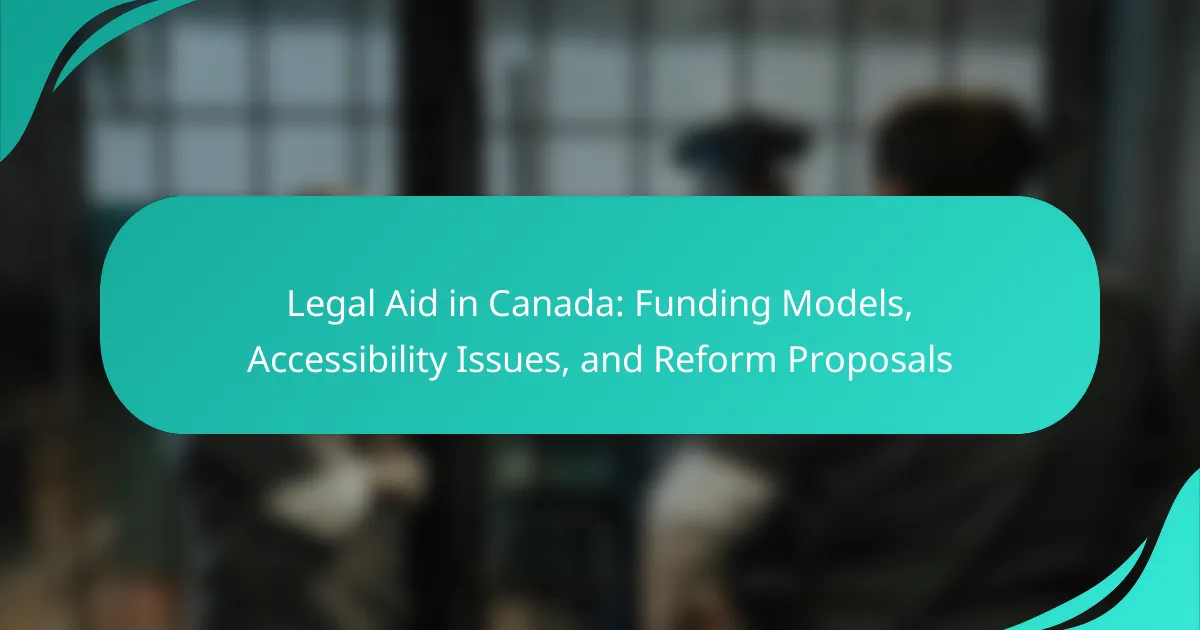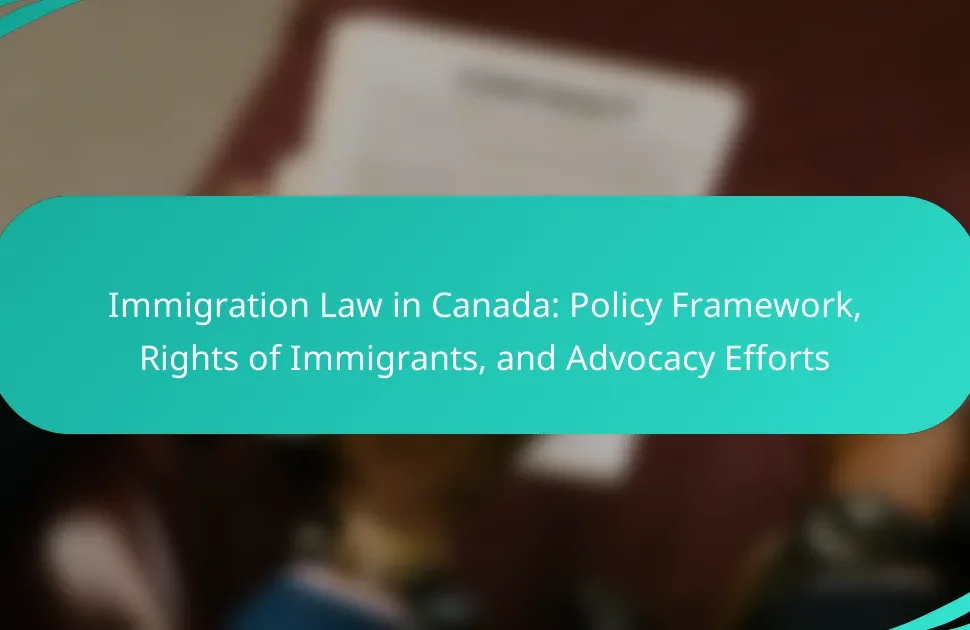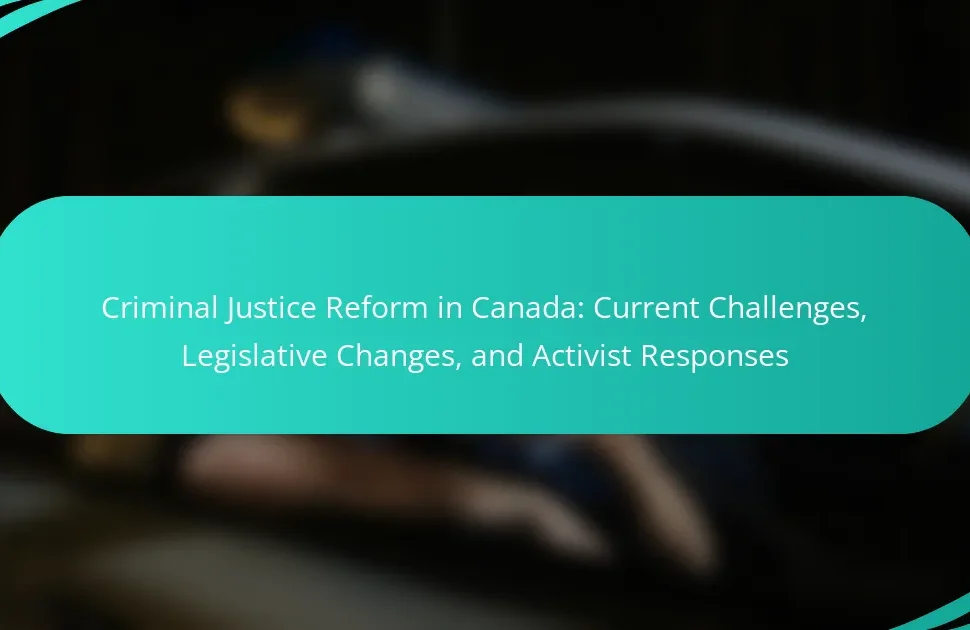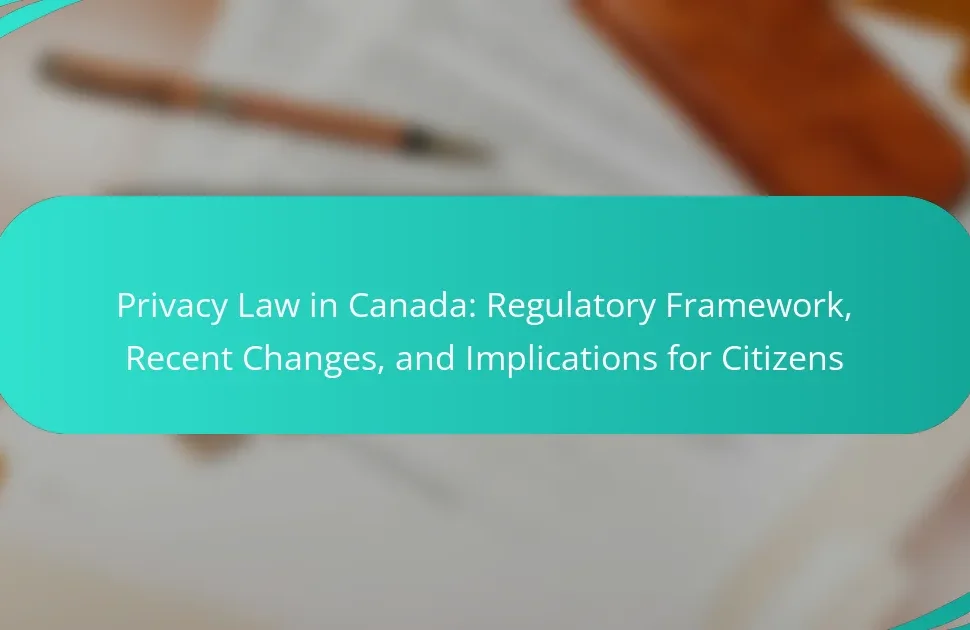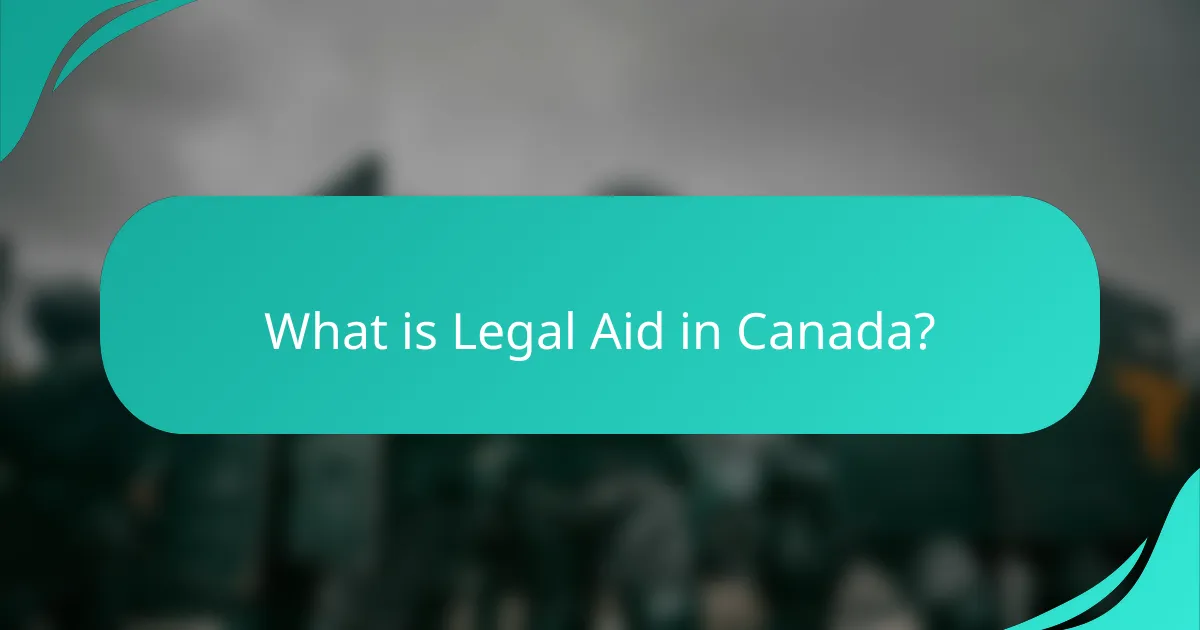
What is Legal Aid in Canada?
Legal aid in Canada is a government-funded program that provides legal assistance to individuals who cannot afford legal representation. It aims to ensure access to justice for low-income individuals facing legal issues. Legal aid services include consultations, representation in court, and assistance with legal documents. Each province and territory administers its own legal aid program with varying eligibility criteria and services. In 2020, over 1.3 million Canadians received legal aid services. This support helps individuals navigate complex legal systems and promotes fairness in the justice process.
How is Legal Aid structured within the Canadian legal system?
Legal Aid in Canada is primarily structured through provincial and territorial programs. Each province and territory administers its own legal aid system. These systems are funded by a combination of government funding, client contributions, and private donations. Legal Aid services typically include assistance for criminal, family, and immigration law cases. Eligibility for legal aid is generally based on income and the type of legal issue. Legal Aid Ontario, for example, provides services to low-income individuals throughout the province. In British Columbia, Legal Services Society offers similar support, focusing on accessibility. The federal government also provides some funding to support these provincial programs. This structure ensures that legal aid is tailored to the specific needs of each jurisdiction while maintaining a consistent framework across Canada.
What are the primary objectives of Legal Aid in Canada?
The primary objectives of Legal Aid in Canada are to ensure access to justice for low-income individuals. Legal Aid provides legal assistance in various areas, such as criminal law, family law, and immigration. It aims to protect the rights of marginalized populations. Legal Aid also seeks to reduce the burden on the court system by promoting settlement and resolution outside of court. Furthermore, it strives to enhance public confidence in the legal system. Legal Aid is funded by provincial and territorial governments, ensuring sustainability and availability of services. These objectives support the fundamental principle of equality before the law.
Who qualifies for Legal Aid services in Canada?
Individuals who qualify for Legal Aid services in Canada typically meet specific income and asset criteria. Legal Aid programs assess financial eligibility based on the applicant’s income level compared to the poverty line. Each province and territory has its own income thresholds. Applicants may also be required to demonstrate that they have a legal issue that falls within the scope of services provided. This includes criminal matters, family law, and immigration cases. Additional factors, such as the complexity of the case and the applicant’s residency, can also influence eligibility. Legal Aid services aim to ensure access to justice for those who cannot afford legal representation.
What are the different funding models for Legal Aid in Canada?
Legal Aid in Canada is funded through various models. The primary funding models include government funding, private funding, and mixed funding. Government funding is the most prevalent, with provincial and territorial governments allocating budgets for legal aid services. Private funding sources may include donations from individuals or organizations. Mixed funding combines both government and private contributions to support legal aid programs. Each province and territory may implement different models based on local needs and resources. The effectiveness of these models can vary, impacting accessibility and the quality of legal services provided.
How does public funding support Legal Aid services?
Public funding supports Legal Aid services by providing essential financial resources. These funds enable Legal Aid organizations to offer legal assistance to individuals who cannot afford it. Public funding often comes from government budgets at federal, provincial, and territorial levels. In Canada, for example, the federal government allocates millions annually to support these services. This funding helps cover operational costs, including staff salaries and legal resources. Public funding also ensures that Legal Aid services remain accessible to marginalized communities. As a result, it plays a crucial role in upholding the right to legal representation for all citizens.
What role do private donations and grants play in Legal Aid funding?
Private donations and grants are crucial for Legal Aid funding. They provide additional financial resources that complement government funding. Many legal aid organizations rely on these contributions to maintain and expand their services. Private donations can come from individuals, corporations, and foundations. Grants from philanthropic organizations often target specific legal issues or underserved populations. According to the Canadian Bar Association, these funds help bridge gaps in funding that government resources cannot cover. In some provinces, private donations constitute a significant portion of the overall budget for legal aid services. This support enables legal aid programs to serve clients who may otherwise lack access to legal representation.
What are the implications of varying funding models on service delivery?
Varying funding models significantly impact service delivery in legal aid. Different funding sources can lead to disparities in resource allocation. For instance, government-funded models may prioritize certain demographics over others. This can affect access to services for marginalized groups. In contrast, private funding may introduce profit motives, influencing the quality of service. Research indicates that jurisdictions with mixed funding models often achieve better outcomes. A study by the Canadian Bar Association highlights that diverse funding sources enhance service accessibility. Overall, the implications of funding models are crucial for equitable legal aid service delivery.
What accessibility issues are faced by Legal Aid in Canada?
Legal Aid in Canada faces several accessibility issues. These include limited funding, which restricts the availability of services. Many individuals cannot access legal aid due to income eligibility criteria. Geographic disparities also exist, with rural areas having fewer resources. Language barriers hinder access for non-English speakers. Additionally, awareness of legal aid services is often low among marginalized communities. Long wait times for legal assistance further complicate access. These factors collectively limit the effectiveness of legal aid in serving those in need.
How do geographic disparities affect access to Legal Aid?
Geographic disparities significantly impact access to Legal Aid. Rural areas often have fewer legal resources compared to urban centers. This results in limited availability of legal professionals. Many individuals in remote locations face difficulties in obtaining assistance. Travel distances to legal aid offices can be substantial. A 2019 report by the Canadian Bar Association highlighted that over 50% of Canadians in rural areas struggle to access legal services. Additionally, funding for Legal Aid is often concentrated in urban regions. This creates a disparity in service provision across different geographic locations.
What barriers do marginalized communities face in accessing Legal Aid?
Marginalized communities face several barriers in accessing legal aid. These barriers include financial constraints, limited awareness of available services, and systemic discrimination. Many individuals from these communities cannot afford legal fees, even with subsidized services. Additionally, a lack of information about legal aid options prevents them from seeking help. Language barriers and cultural differences further complicate access to legal resources. Geographic isolation also plays a role, as many rural areas have few legal aid offices. Research indicates that these factors collectively hinder equitable access to justice for marginalized groups.
How do language and cultural differences impact Legal Aid accessibility?
Language and cultural differences significantly impact Legal Aid accessibility. Individuals may struggle to understand legal processes due to language barriers. This can prevent them from seeking assistance or fully engaging with legal services. Cultural differences may lead to mistrust of legal institutions. Mistrust can further deter individuals from accessing necessary legal aid. Studies show that language accessibility improves legal outcomes. For instance, providing interpreters increases client participation and satisfaction. Legal Aid organizations must address these differences to enhance service accessibility.
What reform proposals are being considered for Legal Aid in Canada?
Reform proposals for Legal Aid in Canada include increased funding, expanded eligibility criteria, and enhanced service delivery models. These proposals aim to address accessibility issues faced by low-income individuals. Increased funding is necessary to meet the growing demand for legal services. Expanding eligibility criteria would allow more individuals to qualify for assistance. Enhanced service delivery models may include integrating technology to streamline access. These reforms are being discussed by various stakeholders, including legal aid organizations and government bodies. The goal is to ensure equitable access to justice for all Canadians.
What changes are suggested to improve funding for Legal Aid?
Increased government investment is suggested to improve funding for Legal Aid. This change aims to enhance access to legal services for low-income individuals. Expanding eligibility criteria for legal aid can help more people qualify for assistance. Implementing a sliding scale fee system may also increase affordability. Additionally, establishing partnerships with private law firms can provide pro bono services. Increasing awareness about available legal aid resources can further improve access. These changes are supported by studies showing that enhanced funding leads to better legal outcomes for underserved populations.
How can Legal Aid services be made more accessible to the public?
Legal Aid services can be made more accessible to the public by increasing funding and outreach efforts. Enhanced funding allows for more resources and staff, leading to shorter wait times. Outreach programs can educate communities about available services. Mobile legal clinics can reach underserved areas directly. Online resources and virtual consultations expand access for those unable to travel. Simplifying application processes removes barriers for potential clients. Collaborations with community organizations can help identify and assist those in need. Evidence shows that states with increased funding see higher usage rates of legal aid services.
What innovative approaches are being proposed to enhance Legal Aid delivery?
Innovative approaches to enhance Legal Aid delivery include technology integration, community partnerships, and streamlined processes. Technology integration involves using online platforms for legal consultations and document submissions. This can improve accessibility for clients in remote areas. Community partnerships can leverage local organizations to provide support and resources for legal aid services. Streamlined processes aim to reduce bureaucracy and improve efficiency in service delivery. These approaches are being discussed in various legal reform proposals, highlighting their potential to address accessibility issues in Canada’s legal aid system.
How can individuals advocate for better Legal Aid services in Canada?
Individuals can advocate for better Legal Aid services in Canada by engaging in community awareness campaigns. They can organize informational sessions to educate the public on the importance of legal aid. Advocacy groups can be formed to represent the interests of those needing legal assistance. Individuals can contact their elected representatives to express concerns about funding and accessibility. Writing letters to local newspapers can raise awareness about the issues faced by legal aid services. Collaborating with legal professionals can help amplify the advocacy efforts. Participating in public consultations can provide direct input into policy changes. Studies show that increased public engagement leads to better funding outcomes for legal aid programs.
What best practices can enhance the effectiveness of Legal Aid programs?
Best practices that can enhance the effectiveness of Legal Aid programs include increasing funding and resources. Adequate funding allows for hiring more staff and improving services. Training staff in trauma-informed care improves client interactions. Collaboration with community organizations expands outreach and accessibility. Implementing technology solutions streamlines case management and communication. Regularly assessing program outcomes ensures continuous improvement. Engaging clients in the design of services fosters relevance and responsiveness. These practices are supported by studies indicating that well-resourced programs significantly improve legal outcomes for clients.
Legal Aid in Canada is a government-funded program designed to provide legal assistance to individuals who cannot afford representation, ensuring access to justice for low-income populations. The article examines the structure of legal aid services, detailing the various provincial and territorial programs, funding models, and eligibility criteria. It highlights accessibility issues, such as geographic disparities and barriers faced by marginalized communities, while also discussing reform proposals aimed at improving funding and service delivery. Key innovative approaches and best practices are presented to enhance the effectiveness of legal aid programs, alongside advocacy strategies for individuals seeking to support these essential services.
